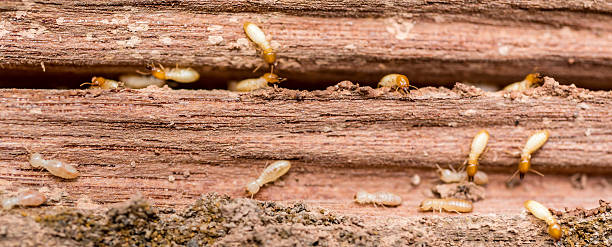As you stroll through the vibrant aisles of a grocery store or wander through the bustling stalls of a farmer’s market, your eyes are drawn to an array of colourful fruits, each promising sweetness and juiciness.
However, the disappointment of biting into an unripe or overripe piece of fruit can quickly turn this exciting experience into a frustrating one.
The art of selecting ripe fruit while shopping is a skill that can elevate your culinary adventures and ensure that every bite is bursting with flavour and freshness.
In this article, we have provided a comprehensive guide on How to Select Ripe Fruit while shopping. Carefully read through!
Table of contents
Importance of Selecting Ripe Fruit
Choosing ripe fruit is crucial for several reasons:
1. Taste:
Compared to immature fruit, ripe fruit is usually sweeter, juicier, and more flavorful. This is because fruit’s starches convert into sugars when they ripen, adding to its sweetness and flavour. In addition, the fruit’s cell walls disintegrate, releasing more flavourings and water.
2. Nutrient content:
In general, mature fruit has more nutrients than unripe fruit. This is because ripe fruit can synthesize and accumulate more nutrients.
After all, its cells are more metabolically active and active. Furthermore, ripe fruit has antioxidants that are easier for the body to absorb.
Read ALSO: How To Install Weatherstripping Doors: Tips And Guidelines
3. Feel:
Compared to unripe fruit, ripe fruit has a softer, more delicate texture. This is because fruit becomes more malleable as it ripens due to the breakdown of its cell walls. In addition, the fruit becomes sweeter and more appetizing when the sugars in it break down into smaller molecules.
4. Retention:
Ripe fruit will store better than unripe fruit. This is because ripe fruit has more active enzymes that maintain the fruit’s quality. Furthermore, when the fruit is mature, its skin is thicker and more protective, preventing spoilage.
5. Health advantages:
Ripe fruit has several health benefits, such as bettering gut health, lowering heart disease risk, and enhancing cognitive performance. The fruit’s high content of antioxidants and other advantageous nutrients is primarily responsible for these advantages.
Signs a Fruit Is Ripe
Here are some common signs that a fruit is ripe:
- Color: Most fruits change color as they ripen. For example, bananas turn from green to yellow, avocados turn from green to black, and strawberries turn from red to pink. This color change is a result of the breakdown of chlorophyll, a green pigment, and the production of anthocyanins, red or purple pigments.
- Firmness: Ripe fruit is typically softer than unripe fruit. However, the firmness of a fruit will vary depending on the type of fruit. For example, avocados should be firm but yield slightly when pressed, while bananas should be very soft and mushy.
- Aroma: Ripe fruit will often have a sweet, pleasant aroma. This aroma is produced by volatile compounds that are released as the fruit ripens.
- Stem or peduncle: The stem or peduncle of a ripe fruit will be green and attached firmly to the fruit. If the stem or peduncle is brown or attached loosely to the fruit, the fruit is likely overripe.
- Taste: Ripe fruit will be sweet and juicy. If the fruit is sour or bland, it is not ripe.
How to tell if different fruits are ripe:
Here are some specific examples of how to tell if different fruits are ripe:
- Apples: Apples are ripe when their skin is smooth, shiny, and slightly fragrant. The stem should be green and pliable.
- Bananas: Bananas are ripe when their skin is yellow and has some brown spots. The flesh should be soft and slightly mushy.
- Oranges: Oranges are ripe when their skin is bright orange and feels slightly bumpy. The rind should be easy to peel.
- Grapes: Grapes are ripe when they are plump, juicy, and have a sweet flavor. The stems should be green and firm.
- Strawberries: Strawberries are ripe when their skin is deep red and the flesh is soft. The stems should be green and firm.
If you are unsure about whether a piece of fruit is ripe, it is always better to err on the side of caution and buy it unripe. You can ripen it at home by placing it in a paper bag with a ripe apple or banana. The ethylene gas emitted by these fruits will help to ripen the other fruit.
How to Pick a Ripe Pineapple
Here’s how to pick a ripe pineapple:
Appearance:
- Color: Ripe pineapples have a golden yellow color, with a slight green tinge at the base. Avoid pineapples that are too green or have a brownish or reddish hue.
- Skin: The skin of a ripe pineapple should be firm and slightly rough, not mushy or wrinkled. Avoid pineapples with soft or overly shiny skin, as this may indicate overripeness or poor quality.
- Crown: The crown, or the spiky green top of the pineapple, should be fresh and vibrant green. Avoid pineapples with dry, brown, or wilted crowns.
Smell:
- Aroma: A ripe pineapple should have a sweet, pleasant aroma, similar to a combination of citrus and bananas. Avoid pineapples with a sour or fermented smell, as this indicates overripeness or spoilage.
Texture:
- Firmness: Gently squeeze the pineapple near the base. It should feel slightly firm, not too soft or mushy. Avoid pineapples that are too hard, as they may be underripe.
- Stems: Try pulling out one or two of the crown’s stems. If they come out easily, it’s a sign of ripeness. If they resist pulling, the pineapple may not be ripe yet.
How To Pick Out the Perfect Vegetables
Choosing the perfect vegetables requires a keen eye and an understanding of how to assess their freshness and quality. Here’s a comprehensive guide to selecting the best vegetables:
General Guidelines:
- Appearance: Look for vegetables that are blemish-free, evenly colored, and have a firm, plump appearance. Avoid vegetables with wilted leaves, soft spots, or discolouration.
- Texture: Gently press on the vegetable. It should feel slightly firm, not too soft or mushy. Avoid vegetables that are overly hard or wrinkled.
- Color: Most vegetables have a vibrant, natural color. Avoid vegetables that are dull, pale, or have an unnatural hue.
- Stems and Leaves: Leafy vegetables should have crisp, green leaves that are free from blemishes or wilting. Stems should be firm and not limp or woody.
- Smell: Fresh vegetables should have a mild, pleasant aroma. Avoid vegetables with a sour, fermented, or off-putting smell.
Specific Vegetable Tips:
- Asparagus: Look for spears that are firm, straight, and tightly closed tips. Avoid asparagus with limp, yellow, or brown spears.
- Avocados: Ripe avocados should yield slightly to gentle pressure and have a deep green or blackish skin color. Avoid avocados with blemishes, soft spots, or a dull, brownish skin.
- Broccoli: Choose broccoli florets that are deep green and tightly packed. Avoid broccoli with yellow or wilted florets, or those with woody stems.
- Carrots: Select carrots that are smooth, firm, and have a bright orange color. Avoid carrots with cracks, soft spots, or a pale or greenish hue.
- Celery: Choose celery stalks that are crisp, firm, and have bright green leaves. Avoid celery with limp, yellow, or brown leaves.
- Lettuce: Opt for lettuce leaves that are crisp, vibrant green, and free from blemishes or wilting. Avoid lettuce with soft, brown, or slimy leaves.
- Mushrooms: Choose mushrooms that are firm, dry, and have a smooth, even cap. Avoid mushrooms with slimy caps, dark spots, or wrinkled skin.
- Onions: Select onions that are firm, dry, and have smooth, papery skin. Avoid onions with soft spots, blemishes, or sprouting green shoots.
- Peppers: Choose firm peppers, that have smooth, shiny skin, and vibrant colour. Avoid peppers with wrinkles, soft spots, or discolouration.
Remember, selecting the best vegetables is crucial for ensuring optimal flavor, nutrition, and overall quality in your dishes. By following these guidelines and specific tips, you’ll be well on your way to picking out the perfect vegetables every time.
Read ALSO: How To Fix Sticky Buttons On Xbox Controller
How to Pick a Ripe Cantaloupe
Here’s how to pick a ripe cantaloupe:
Appearance:
- Color: Ripe cantaloupes have a rich orange-yellow color. Avoid cantaloupes with a dull or greenish hue.
- Shape: Ripe cantaloupes are typically oblong or round in shape. Avoid cantaloupes with an overly elongated or misshapen form.
- Stem scar: The stem scar, the small scar at the top of the cantaloupe, should be sunken and slightly brown. Avoid cantaloupes with a raised or green stem scar, as this indicates underripeness.
- Underside: The underside of the cantaloupe should be slightly soft and fragrant. Avoid cantaloupes with a hard or dry underside, as this indicates underripeness.
Smell:
- Aroma: Ripe cantaloupes emit a sweet, musky aroma. Avoid cantaloupes with a sour or fermented smell, as this indicates overripeness or spoilage.
Texture:
- Firmness: Gently press on the cantaloupe near the stem scar. It should feel slightly soft, not too hard or mushy. Avoid cantaloupes that are too hard, as they may be underripe.
- Ribs: Gently press on the ribs of the cantaloupe. They should yield slightly to pressure and spring back. Avoid cantaloupes with hard or rigid ribs, as this indicates underripeness.
Yes, nutrients can be lost when cooking fruits and vegetables. The amount of nutrients lost depends on the cooking method, the cooking time, and the type of fruit or vegetable.
Cooking Methods:
- Boiling: Boiling is one of the most common cooking methods, but it can also lead to significant nutrient loss. Water-soluble vitamins, such as vitamin C and B vitamins, can leach out into the cooking water.
- Sautéing and Stir-Frying: These methods involve cooking quickly over high heat with a small amount of oil. This can help to preserve nutrients, especially vitamins C and E.
- Roasting and Steaming: Roasting and steaming are also good options for preserving nutrients. Roasting exposes vegetables to high heat, which can caramelize sugars and enhance their flavor, while steaming cooks them gently without leaching out nutrients.
Cooking Time:
The longer fruits and vegetables are cooked, the more nutrients they lose. To minimize nutrient loss, cook vegetables until they are tender-crisp. Overcooking can destroy vitamins and other nutrients.
Type of Fruit or Vegetable
Some fruits and vegetables are more susceptible to nutrient loss than others. Leafy greens, such as spinach and kale, are high in vitamin C, which is heat-sensitive. Cruciferous vegetables, such as broccoli and cauliflower, are also high in vitamin C and can lose nutrients when overcooked.
Tips for Minimizing Nutrient Loss:
- Cut fruits and vegetables into larger pieces. This will minimize the surface area exposed to heat and water, reducing nutrient loss.
- Use the minimum amount of water necessary for cooking. The less water used, the less likely it is that nutrients will leach out.
- Add vegetables to boiling water instead of starting them in cold water. This will help to preserve their color and nutrients.
- Cook vegetables until they are tender-crisp. Overcooking can destroy vitamins and other nutrients.
- Use the cooking water from vegetables. This water contains valuable nutrients that can be added to soups, sauces, or stews.
By following these tips, you can help preserve the nutrients in fruits and vegetables and enjoy their many health benefits.
Read ALSO: How to Remove Blood Stains in Simple & Easy Tips
FAQs
Look for a yellow spot on the bottom – this indicates that it’s ready to eat.
Select bananas with some brown speckles on the skin for optimal ripeness.
Give the base a gentle squeeze – if it gives slightly, it’s ripe.
Conclusion
Selecting ripe fruit while shopping requires attention to detail and an understanding of the specific characteristics of each type of fruit. By using a combination of visual cues, touch, and smell, shoppers can ensure they are choosing the best produce available. It is important to remember that different fruits have different ripeness indicators, so it is essential to educate oneself about each variety. With practice and experience, individuals can develop the skills necessary to consistently select ripe and delicious fruit.





